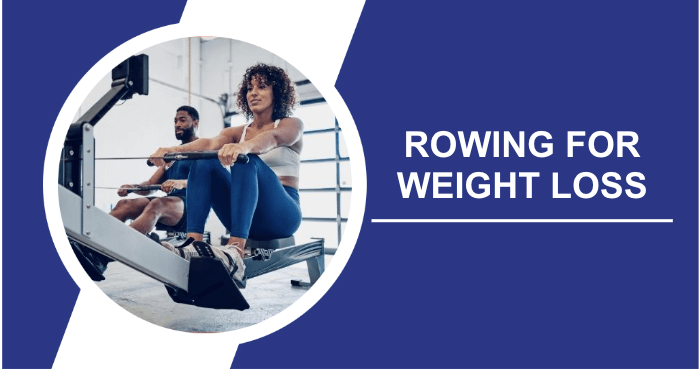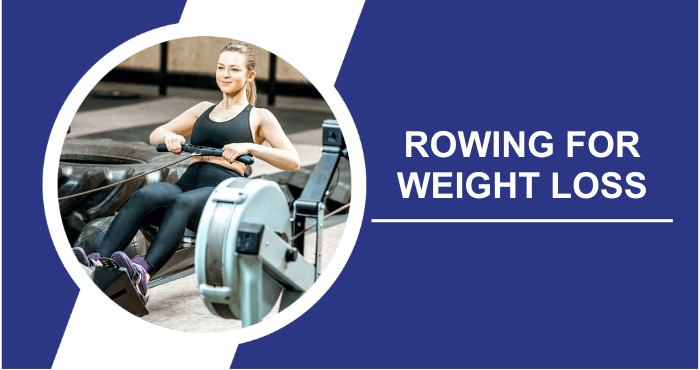In the past people regarded using a boat to navigate across a water body as a way of staying active. Rowing the oars not engaged the arms but also involved the torso while keeping the lower limbs stable by planting them on the boats floor helped strengthen them.
Today, the opportunity to actually row on the water is limited for many. However, the fitness community, recognising the myriad benefits associated with this activity, has worked diligently over time to improve the practice of rowing through the invention of the mechanical rowing machine.
In the past during the 4th century BC there was an Athenian admiral named Chabrias. He came up with the idea of using rowing machines to assist in military training. These machines provided an opportunity for beginner rowers to practice and refine their technique and timing before setting sail on missions.
The first patented indoor rowing machine was introduced in 1872 and is credited to W.B. Curtis. Its purpose was to make it easier for water sportsmen to maintain their fitness on land. Subsequent refinements have been made over the years, culminating in the sophisticated models we see today, designed for both commercial and domestic use.
Rowing machine training strategy for weight loss There are two primary approaches for utilizing a rowing machine to achieve weight loss; engaging in consistent rowing, at a moderate level of intensity or following an interval based regimen that involves alternating between sustained rowing and brief bursts of vigorous rowing.
Both approaches to exercise, whether steady, continuous exercise or high-intensity interval training, are effective in reducing body fat and losing weight through the calorie-burning process.
Where can I find rowing machines? Do I need to buy my own?
Rowing machines can be found in locations. Many local gyms offer them as a facility, for their members. Alternatively you have the option to purchase one online or from a fitness equipment store. The choice of whether to invest in a rowing machine depends on your fitness objectives and personal convenience preferences. Owning your rowing machine provides flexibility but if you enjoy having different workout options utilizing the equipment at a gym might be more suitable.
How much does a rower cost?
The cost of a rowing machine can vary greatly depending on the brand, features and quality. Basic models can start at around $200, while more advanced and professional rowers can cost upwards of $1,000. It’s important to consider your budget and specific fitness needs when choosing a rowing machine, as there are a wide range of options to suit different preferences and price points.
Rowing machine for weight loss
Rowing is becoming an attractive option in the world of weight loss amidst the abundance of choices available today. This is due to the fact that rowing provides a workout that engages the entire body and holds great promise, for shedding those extra pounds.
The number of calories you can effectively burn while rowing depends on several variables, including the specific rowing machine you use, the duration of your workout, the intensity of your workout and your individual body size.
Is a rowing machine good for weight loss?
Rowing is a way to lose weight due to its low impact nature and the fact that it engages your entire body. When compared to activities, like running or cycling rowing utilizes double the amount of muscle mass.
Each stroke on a rowing machine simultaneously targets your quadriceps, hamstrings, glutes, core, arms and back muscles, providing a workout that closely approximates a full-body workout. According to the American Fitness Professionals Association, this means that approximately 65 to 75 percent of the effort is in the legs and 25 to 35 percent is in the upper body.
According to research conducted at Harvard Medical School individuals who weigh 125 pounds can burn 210 calories by engaging in moderate rowing for just 30 minutes. For those weighing 155 pounds the calorie burn increases to around 252. For individuals weighing 185 pounds it can reach approximately 294 calories within the same time frame.
Beginner rowing workout
If you’re new to rowing, it’s a good idea to start with a moderate exercise routine and gradually work your way up to higher intensity levels. Progress in rowing takes time and some people may find higher intensity levels challenging. Whatever your pace, rest assured that both approaches will contribute to fat loss and calorie burning.
If you opt for a workout regimen keep in mind that it might take slightly more time to reach your desired goals. Certain individuals lean towards interval training, which involves alternating between rowing and brief bursts of intense rowing. This kind of routine can enhance the pace at which you burn calories facilitating weight loss.
Josh Jarrett of Quantify Fitness in Nashville explains the benefits of interval training:
“During intervals, muscles use up a significant amount of their stored sugar, which triggers a process that causes them to quickly replenish their glucose supply from other parts of the body.
This process relies on insulin, and over time the body becomes more responsive to lower levels of insulin. When insulin levels are high, the body’s ability to efficiently burn fat is reduced. By increasing the body’s sensitivity to lower levels of insulin, you can “reignite” the fat-burning mechanisms.”
It’s important to mention that when you engage in exercise the amount of oxygen available, to your muscles decreases, leading them to utilize fat as an energy source instead. Whats intriguing is that even after you finish exercising your body continues to burn calories for hours as it tries to make up for the lack of oxygen experienced during the workout.
How should I eat if I want to lose weight on a rowing machine?
If you want to lose weight while using a rowing machine, it’s important to focus on a balanced and sustainable diet. Include whole foods such as fruit, vegetables, lean proteins and whole grains in your meals. Watch portion sizes to manage calorie intake. Stay hydrated and avoid sugary drinks.
Make sure to have snacks like nuts or yogurt whenever you need a boost of energy. It’s important to maintain consistency so try to have smaller meals throughout the day to keep your metabolism active. If you want advice, for your weight loss goals and rowing routine it’s a good idea to consult a nutritionist or dietician who can help create a tailored plan just for you.
Rowing plan for weight loss
As with any fitness programme, maintaining the consistency and duration of your workout is essential to achieving optimal results, even when your schedule is hectic. Determining the calories burned per hour during a rowing session can be a somewhat complicated task. Fortunately, modern rowers come with built-in computers that do the math for you.
To determine the calculations various factors are considered, including the distance rowed in meters energy expenditure in watts and the duration of your rowing session in seconds. It is recommended to aim for 30 to 50 minutes of rowing at an intensity around five to six times per week. Concept2 provides the following suggestions, for weight loss training:
Plan One
Start with two moderate 10-minute sessions, separated by 2 minutes of easy rowing. Aim for a distance of 5000 to 7000 metres.
Plan Two
I suggest breaking your workout into three sessions, each lasting around 10 minutes. Take a break of 2 minutes in, between each session for some easy rowing. Your goal should be to cover a distance of 10,000 meters.
Plan Three
Work out for 20-30 minutes or longer, alternating 1 minute of hard rowing with 1 minute of easy rowing.
If you plan on incorporating the rowing machine into your weight loss program for the run it’s important to maintain a consistent and moderate level of intensity. Aim to set the damper between 3 and 6 which will enable you to row for a period, without excessive fatigue. By keeping your heart rate within the range of 50 65% of your target heart rate you’ll effectively burn calories while working towards losing fat.
How to properly use a rowing machine
Before starting your workout, it’s important to familiarise yourself with the correct use of the equipment to avoid potential injuries that could have both temporary and permanent effects. The following are guidelines for maintaining good form when using a rowing machine:
Body Position
- Start by sitting upright with your tailbone firmly against the seat back.
- Place your feet on the pedals.
- Grip the handlebars firmly.
- Push your legs back until they are fully extended.
- Ride forward with your knees close to your chest.
- Keep your posture correct by keeping your shoulders back and chest open.
- It’s important to avoid leaning too far forward, as this can lead to upper body strain.
- Conversely, leaning back too far can result in a loss of power during the pulling motion.
Foot Position
- Adjust the straps over your feet for a snug fit.
- Adjust the position of the footrests by raising or lowering them as necessary to allow your forearms to clear your knees without touching them.
What negative side effects can a rowing machine have?
Although rowing machines provide advantages, improper or excessive use can lead to negative consequences. One common issue is the risk of overuse injuries, including muscle strains or tendonitis which may arise when proper form is not maintained or when intensity levels are escalated rapidly. Additionally extended or intense rowing sessions have the potential to cause back or shoulder problems.
It’s important to warm up, cool down and stretch to prevent these problems. In addition, if you have any underlying health conditions, you should consult a health professional before starting a rowing programme, as overexertion can aggravate certain medical problems. Proper technique and moderation can help minimise these potential negative side effects.
Frequently asked questions
How can a rowing machine help me with weight loss?
Using a rowing machine offers a workout that efficiently burns calories and focuses on various muscle groups. This consistent use can contribute to weight loss.
How often should I use a rowing machine for weight loss?
Aim for at least 3 – 5 sessions per week, with each session lasting 20-30 minutes or more, depending on your fitness level.
Can I lose weight by only using a rowing machine?
Rowing is a way to stay fit but if you want to achieve long term weight loss its crucial to complement it with a well rounded diet and a healthy lifestyle.
Can I solely rely on rowing for weight loss, or should I include other exercises?
Although rowing is excellent, incorporating a variety of exercises can help prevent plateaus and improve overall fitness. Variety is the key to long-term success.
How soon can I expect to see weight loss results from rowing?
Weight loss outcomes may differ, but if you stay committed maintain a rounded diet and put in sufficient effort you should begin noticing changes within a few weeks.
Conclusion
Achieving weight loss goals requires unwavering consistency, dedication and hard work. Success in this endeavour depends on the fundamental principle of burning more calories than you consume. Therefore, it is imperative that you complement your fitness programme with careful attention to your calorie intake through a balanced and nutritious diet.
To increase your likelihood of reaching and maintaining a weight it’s important to incorporate both exercise and a balanced diet into your program. Keep in mind that long term success stems from taking an approach that combines regular physical activity with mindful eating habits ensuring lasting outcomes.
Resources
- Physical Culture Study. (2016). The History of the Indoor Rower. [online] Available at: Read article
- AFPA American Fitness Professionals & Associates (2021). Health, Fitness & Nutrition Certifications and Courses | AFPA. [online] Available at: Read article
Paul Piepenbrok is a Registered Dietitian Nutritionist with over 12 years of experience. He specializes in the health sciences and writes extensively about nutrition and chronic disease. He holds a Master of Science degree in Human Nutrition and has completed post-graduate work in the Nutrition Sciences. The author has experience working in various healthcare settings, including hospitals, nursing homes, and public health departments. They have worked as a Health Facility Surveyor and a WIC Program Manager in Plano, Texas. Before becoming a full-time freelance writer, they successfully operated a telehealth wellness clinic, assisting clients in achieving their health goals, including weight loss, blood sugar control, liver function improvement, and overall health enhancement.
Brittany Hernandez specializes in assessing supplements, health technologies, and applications. She continually enhances her skills as a health copywriter. With a Bachelor's degree in Translation and Communication and a background in linguistics, Brittany is skilled at converting complex research into accessible, high-quality content. She is highly regarded in the health industry for her keen eye for detail and ability to identify high-quality health and wellness products.




